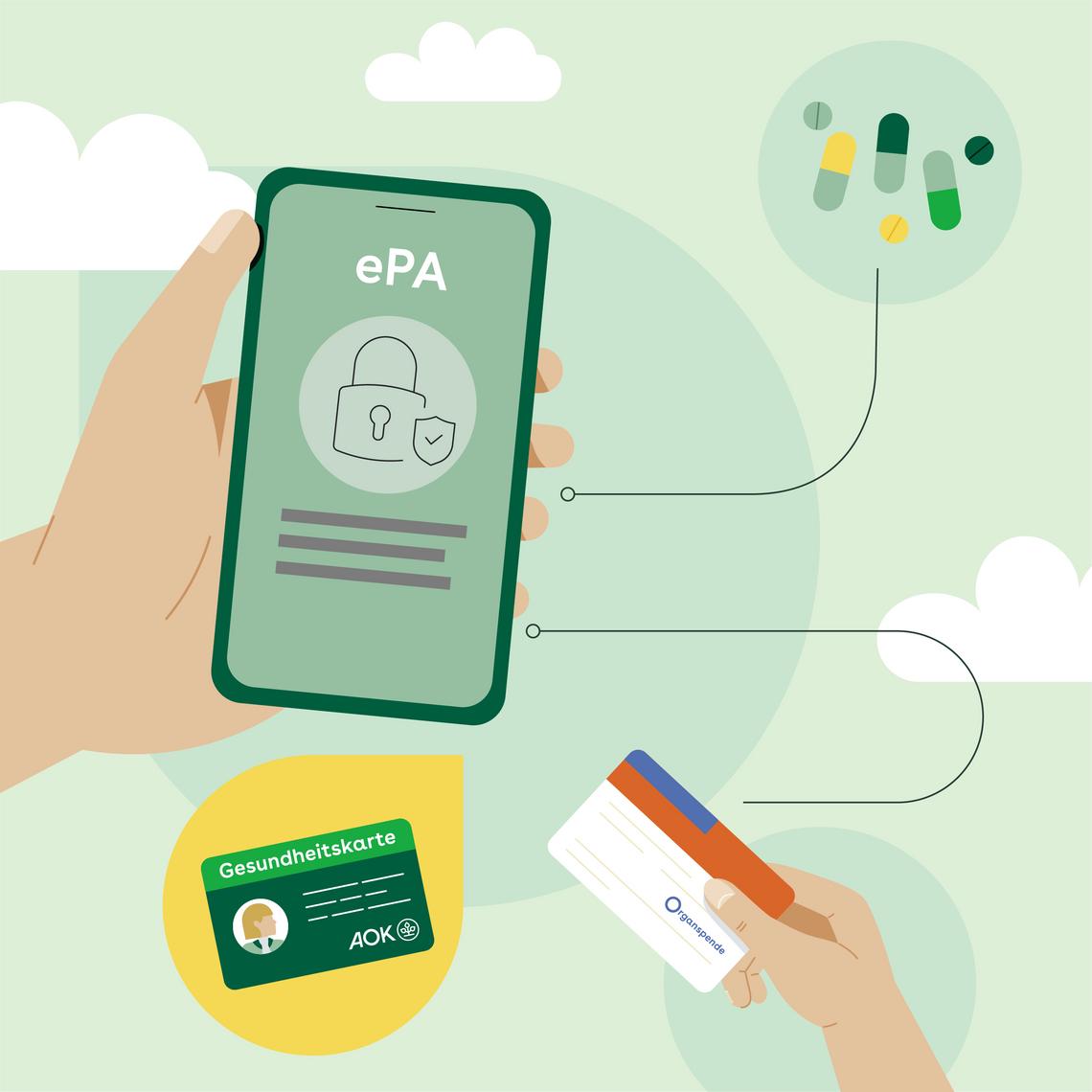The Electronic Patient Record (ePA) explained simply
From 2025, all people with statutory health insurance will receive an ePA. In this overview, we explain how the ePA securely manages your health data and what options you have for using it.
The content:

What is the ePA?
The Electronic Patient Record (ePA) is a personal, secure storage location for health data. In January 2025, all people with statutory health insurance will receive an ePA from their health insurance provider. It will enable you and authorised persons - such as your treating doctors - to manage your health data securely. In future, it will also be possible to conveniently view the ePA using a smartphone. Use of the ePA is voluntary. If you do not wish to use the ePA, you can simply object.

The benefits of the ePA
Treating doctors or clinics can store findings, diagnoses, doctor's letters and various certificates in the ePA. They also have the option of adding their own records or adding previous findings, for example. The ePA helps to improve medical care by connecting patients with doctors, hospitals and pharmacies. Instead of lots of individually filed information, all important health data can be found here at a glance.

Data security
The ePA is subject to test criteria developed by the German Federal Office for Information Security (BSI). Encrypted data processing takes place in a technically secure and trustworthy environment at the highest level. Neither the technical operator nor AOK Rheinland/Hamburg have access to your data.

How to use the ePA
From January 2025, with the introduction of the ‘ePA for all’, various access options to the Electronic Patient Record will be available. You will be able to view your ePA at special ombudsman centres and adjust the access rights as required. With your Electronic Health Card (eGK), you will also be able to use the ePA directly in the doctor's surgery or with service providers. In future, the ‘AOK Mein Leben App’ will enable particularly flexible use of the ePA.

Who can access my EPA?
Doctors and clinics will only have access to your ePA if this is necessary for your medical care or healthcare, e.g. in connection with a visit or the utilisation of healthcare services. You are in control of the access authorisations: you decide who can access your data and can change or revoke these authorisations at any time.

Medical use cases of the ePA
From January 2025, you will be able to use the electronic medication list, which automatically contains all the medicines you have been prescribed. From mid-2025, the digital medication process will offer additional functions, such as checking for drug interactions and creating a medication plan. More details on the introduction, scope and utilisation of future use cases will be determined by the legislator.

Support with ePA use
In future, you will be able to use the ombudsman's office and the proxy function of the ePA for support when using the ePA. The proxy function allows you to nominate a trusted person to manage your ePA. From 2025, the ombudsman's office will advise you on questions about the ePA, implement objections and support you in the event of problems. You can also access the ePA there without an app. Both options can be combined as required.

Health insurance change and ePA
If you change health insurer after the introduction of ‘ePA for all’, your ePA data will be transferred automatically and securely. All existing objections and substitutions will be transferred. If you have objected to the transfer of benefit data, you must submit this objection again to your new health insurance company.
Instructions and notes on the app
AOK Rheinland/Hamburg will provide you with all the necessary information on setting up the ePA via app and details on analogue use in good time. There will be various ways to uniquely identify yourself when you first log in on your smartphone. This will ensure that your data on your mobile phone is just as secure as with other methods of use.
Instructions and notes on the app
AOK Rheinland/Hamburg will provide you with all the necessary information on setting up the ePA via app and details on analogue use in good time. There will be various ways to uniquely identify yourself when you first log in on your smartphone. This will ensure that your data on your mobile phone is just as secure as with other methods of use.

![[Bitte in "English" übersetzen:] The GesundheitsID: your digital ID for the ePA](/fileadmin/_processed_/c/a/csm_06-gesundheits-id-frau-auf-dem-sofa-schaut-in-ihr-smartphone_d8ac71c8b1.jpg)


